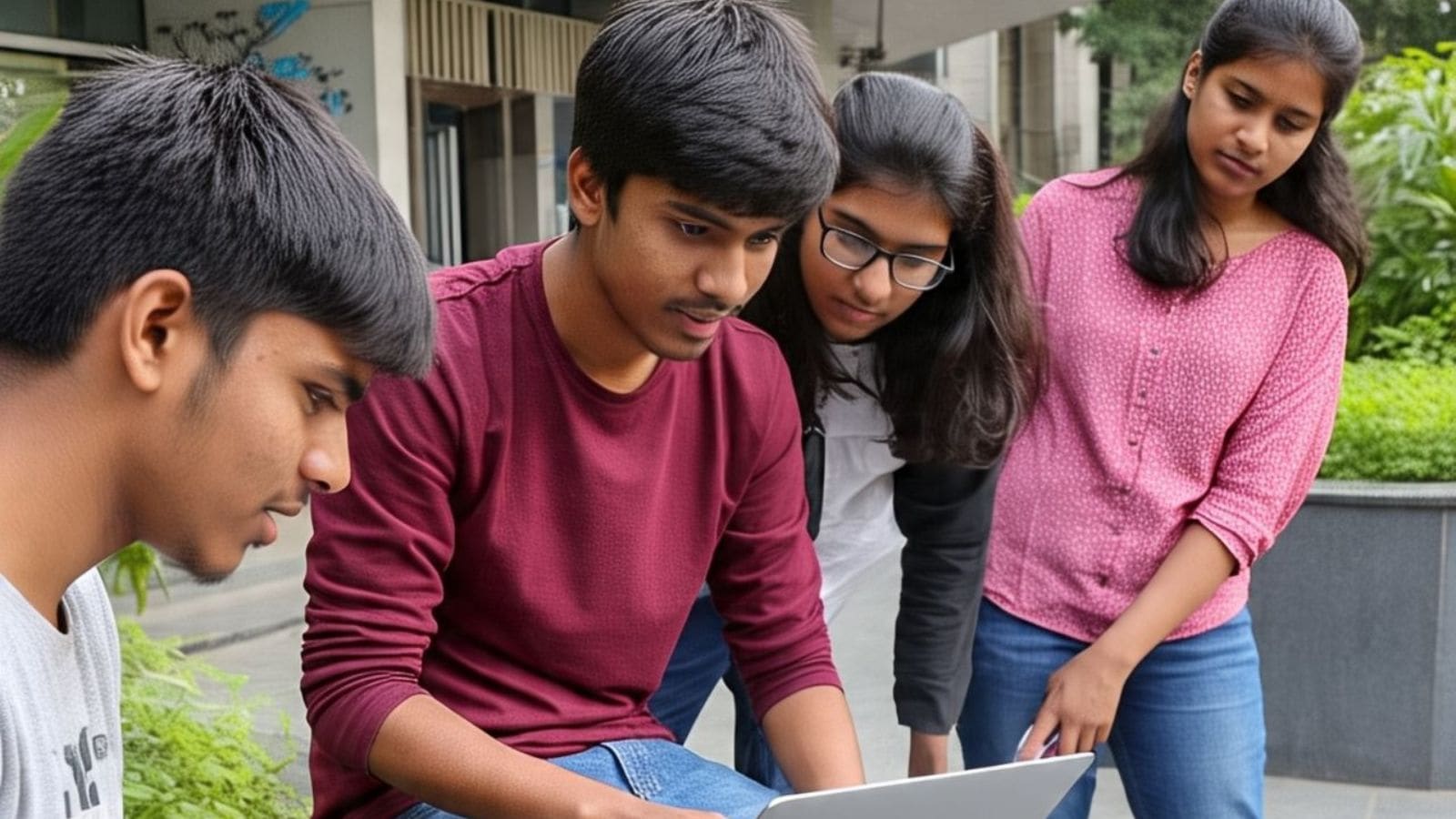The ISRO Sunday said the maiden flight of newly developed Small Satellite Launch Vehicle (SSLV) can be termed as a partial success, with the three solid fuel-based propulsion stages working normally but the satellites getting injected into a wrong elliptical orbit owing to failure of logic to identify a sensor failure.
“SSLV-D1 placed the satellites into 356 km x 76 km elliptical orbit instead of 356 km circular orbit. Satellites are no longer usable. Issue is reasonably identified. Failure of a logic to identify a sensor failure and go for a salvage action caused the deviation. A committee would analyse and recommend. With the implementation of the recommendations, ISRO will come back soon with SSLV-D2,” a statement from the space agency said.
After cheering and clapping for the lift-off and performance of the various stages of the rocket, there was a silence in the mission control room after the separation of the satellites on board at 738 and 788 seconds after the lift-off. This was because there were some data losses in the terminal phases of the mission.
In a video statement Sunday afternoon, S Somanath, the chairperson of the Indian Space Research Organisation (ISRO), said: “The vehicle took off majestically with the burning of the first stage and the subsequent S2 and S3 performed very well. The performance was very good in the mission and finally when it reached the orbit at an altitude of 356 km, the satellites were separated. However, we subsequently noticed an anomaly in the placement of the satellites in the orbit.”
The chairperson further explained that when a satellite is placed in such an orbit, the satellites cannot maintain course for a long time and fall off. “The satellites have already come down from that orbit and they are no longer usable,” said Somanath.
He said that the issue had been “reasonably identified” but a deeper analysis would be carried out. The placement of the satellites in the wrong orbit was owing to the failure of a logic that exists in the rocket to identify a sensor failure and go for a salvage action.
“But for that problem, we couldn’t see any other anomaly. But for that, every other new element that has been incorporated in this rocket performed really well including the propulsion stages, overall hardware, its aerodynamic designs, new generation and low cost electronics, control system, new separation systems, the entire architecture of the rocket, everything has been proven very first time in the rocket and we are happy about that,” said Somanath.
The chairperson said whatever the recommendations of the expert panel are, they will be implemented without delay.
“We hope that with the small corrections and further the re-validations of those corrections through adequate number of tests, we will come back for the next development flight of SSLV-D2 very soon. And we hope that with the second development flight we will become completely successful in proving the vehicle can put satellites in the intended orbits for commercial use for India and the whole world,” said Somanath.
The new rocket was carrying an Indian Earth Observation Satellite EOS-02 weighing 145 kg and AzaadiSat, made by 750 school girls to celebrate the 75 years of independence under SpaceKidz India, weighing 8kg.
The SSLV, which uses three solid fuel-based stages and a liquid fuel-based velocity trimming module (VTM) to place the satellite in orbit, was designed keeping in mind the quick turnaround time needed for commercial launch. The launch using the vehicle can be carried out within a week, with the chairperson Somanath telling indianexpress.com that the vehicle can be integrated in two days, tested for the next two, with rehearsal and launched in the next two days. This timeline was achieved during the current mission, he said Saturday.
The lift-off from India’s only spaceport in Sriharikota at 9:18am was typical of any other launch and remained so for the first three stages of the vehicle. But there was some deviation from the mapped trajectory during the coasting phase, with the third stage separation, VTM ignition, and satellite injection a little delayed from what was mentioned in the space agency’s mission brochure.
!function(f,b,e,v,n,t,s)
{if(f.fbq)return;n=f.fbq=function(){n.callMethod?
n.callMethod.apply(n,arguments):n.queue.push(arguments)};
if(!f._fbq)f._fbq=n;n.push=n;n.loaded=!0;n.version=’2.0′;
n.queue=[];t=b.createElement(e);t.async=!0;
t.src=v;s=b.getElementsByTagName(e)[0];
s.parentNode.insertBefore(t,s)}(window, document,’script’,
‘https://connect.facebook.net/en_US/fbevents.js’);
fbq(‘init’, ‘444470064056909’);
fbq(‘track’, ‘PageView’);








